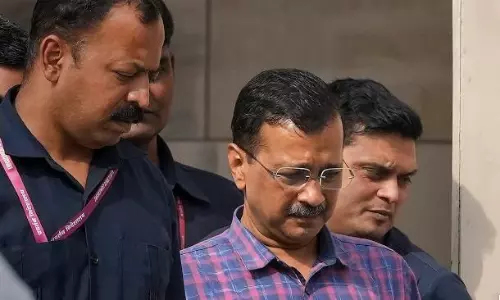
ISRO satellite launch mission fails due to technical anomaly
text_fieldsThe Indian Space Research Organisation (ISRO) could not complete its mission to place its Earth Observation Satellite EOS-03 due to a performance anomaly, stated ISRO on August 12.
The observation satellite GSLV-F10/EOS-03 was launched at 5:43 AM on Thursday morning from the Satish Dhawan Space Centre in Sriharikota following a 26-hour countdown, reported NDTV. However, the Range Operations Director of the Mission Control Centre announced that the mission could not be completed due to an anomaly.
"Performance anomaly observed in the cryogenic stage. The mission could not be accomplished fully," said ISRO. According to Times of India, the lift-off took place as scheduled at 5:43 AM, followed by the core stage burnout, second stage ignition and payload fairing taking place as planned. However, the cryogenic stage following the second stage did not ignite, rendering the mission incomplete.
A Failure Analysis Committee (FAC) will be set up by the ISRO to probe further into the cause of the anomaly.
The launch was initially planned to take place during April or May of 2021 but had to be postponed due to the pandemic. A launch was also planned in March 2020 but was scrapped before the 26-hour countdown. Another plan to launch the satellite in early-2021 was also cancelled due to an issue with the satellite's voltage.
The Earth Observation Satellite, EOS-03, placed in a Geosynchronous Transfer Orbit GSLV-F10 will ideally assist in the speedy monitoring of cyclones, cloudbursts, thunderstorms and other natural disasters.
The information the satellite is expected to provide has varied applications and can be used in the agriculture, forestry, waterbodies sectors as well as to warn of impending natural disasters.
"Unlike satellites in LEO (low Earth orbit), this will provide a continuous view and will be really helpful in meteorological planning, agriculture, disaster warning among other things. This class of satellite is a first-of-its-kind in Earth observation and we are proud," ISRO chairman K Sivan told Times of India prior to the launch.
























